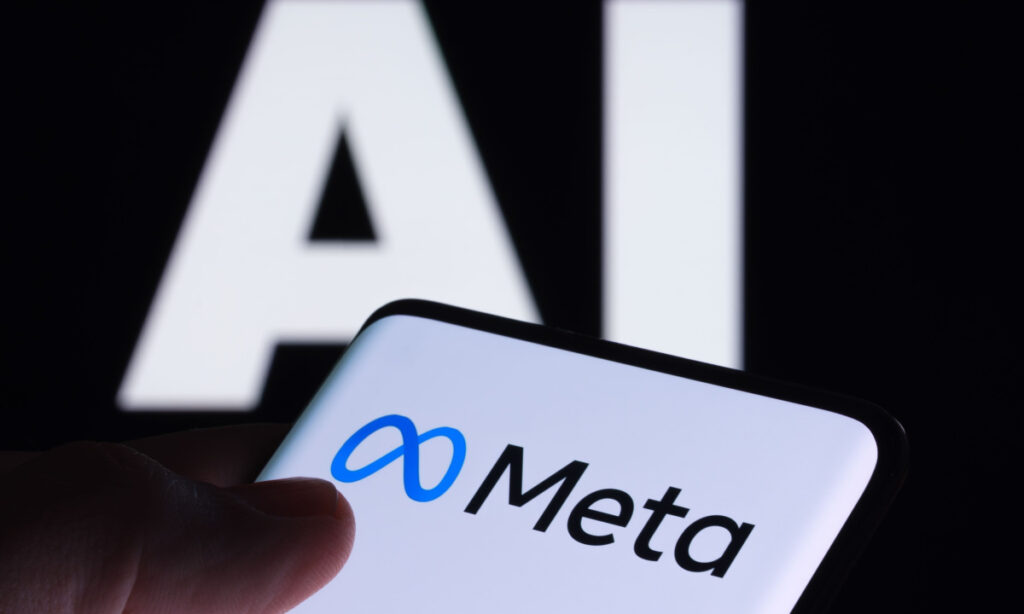Meta Platforms has announced its ambitious plan to harness artificial intelligence (AI) for advertisement creation and targeting by the end of 2026. This initiative is a vital component of CEO Mark Zuckerberg’s vision for the next evolution of the company, in which advertising continues to serve as the primary revenue driver. The development promises to reshape how businesses, particularly small- to medium-sized enterprises (SMBs), engage in advertising, offering tools that could streamline and democratize the ad creation process.
Currently, many SMBs struggle to compete with larger entities in digital marketing, primarily due to limited resources and expertise. The integration of AI into Meta’s advertising platform aims to alleviate these challenges. By automating ad generation, Meta can potentially lower barriers for SMBs, enabling them to produce ads that previously would have required extensive financial investment and creative resources. According to industry reports, the new tools could allow brands to input a product image and budget goals, after which an AI system will generate an entire advertisement, including imagery, video, and text, all while determining optimal target audiences and suggesting budget allocations.
However, larger retail brands express caution regarding this shift toward AI-driven content. There are concerns about relinquishing too much control to Meta, particularly given that AI-generated content sometimes falls short of the quality and aesthetic expectations set by human creators. Reports indicate that AI tools have been known to produce distorted visuals, necessitating human refinement, which raises questions about reliability and ensures that brands feel comfortable with their image.
The current capabilities of Meta’s AI tools primarily focus on generating variations of existing ads, but the company’s vision is to further evolve these offerings. This initiative signifies a potential departure from conventional ad strategies and a move toward complete automation. For brands, the implications of this are significant; while the possibility of creating ads from scratch may appeal to SMBs, larger organizations may still value the assurance that comes with human oversight in the creation process. The competition in AI-driven advertising is heating up, with companies like Google also rolling out innovative tools aimed at content creation, emphasizing the urgency for brands to consider their options carefully.
When comparing different AI and automation platforms, such as Make versus Zapier or OpenAI versus Anthropic, understanding their respective strengths and weaknesses is crucial. For instance, Make offers a more visual interface that may appeal to users seeking intuitive design, while Zapier boasts a wider variety of integrations and a more established user base. The cost implications also vary significantly. While Make may offer a more affordable entry point for SMBs focused primarily on task automation, Zapier’s extensive library of integrations can provide a higher return on investment (ROI) for larger organizations requiring more complex workflows.
On the AI content generation front, OpenAI’s tools, such as DALL-E and GPT, are well-recognized for their versatility and robust performance. OpenAI tends to target larger enterprises that can allocate resources for sophisticated AI applications. In contrast, Anthropic focuses more on ethical AI implementations, which may attract businesses that prioritize compliance and ethical standards but could fall short in generating content quickly at the pace required by fast-moving marketing landscapes.
The scalability of these tools is another pivotal consideration. Meta’s advancements in creating AI-driven advertisements could offer a template for the future of automation in advertising, yet how it harmonizes with existing tools will be vital for its acceptance in the market. The infrastructure for scaling AI operations must be robust, providing not only the necessary computational power but also a structure for ongoing learning and improvement.
In terms of ROI, businesses should rigorously assess how these automated solutions can fit within their long-term strategies. With the correct frameworks and tools, companies can expect reductions in both labor and creative costs while increasing ad outputs. Lowering costs while improving the efficiency of creation processes can yield significant returns if the quality does not diminish.
To facilitate the transition to AI-driven marketing, SMB leaders must also anticipate the training costs associated with adopting these new technologies. Ensuring that teams are well-versed in utilizing AI tools to their fullest potential will be crucial. Furthermore, maintaining an element of human creativity and oversight in this workflow can preserve brand integrity and help in differentiating content in a crowded marketplace.
In conclusion, the move toward AI-driven advertisement creation represents both an opportunity and a challenge for businesses of all sizes. As Meta and other companies make strides in automating the ad process, the implications for cost, quality, and brand control will require careful navigation. Those who remain proactive in integrating and adapting new technologies will likely find themselves ahead of the curve.
FlowMind AI Insight: As AI continues to transform marketing landscapes, leaders must prioritize a balanced approach—leveraging automation for efficiency while retaining essential human oversight to ensure quality and brand identity. By keeping a close eye on performance metrics and market conditions, businesses can maximize their returns on these evolving technologies.
Original article: Read here
2025-06-02 07:00:00

